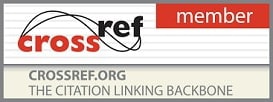Vol. 8, Issue 7, Part K (2024)
Effect of abiotic and biotic factors on growth parameters of Henosepilachna vigintioctopunctata (Coccinellidae: Coleoptera) and Lucinodes orbonalis (Crambidae: Lepidopetera) in brinjal
Author(s):
Shreya, Abhinash Borah and Dr. SK Gharde
Abstract:
Henosepilachna vigintioctopunctata (hadda beetle) and Lucinodes orbonalis (Brinjal shoot and fruit borer) are two highly destructive pests that result in considerable harm to brinjal crops, leading to substantial reductions in yield. In India, yield losses for both of these pests have been documented with a range of 50-70% for brinjal shoot and fruit borer and 60% for hadda beetle. Agro-climatic conditions are very important for the control of these destructive pests, as it can affect the population in greater scale. Numerous non-living variables, such as temperature, relative humidity, rainfall, and photoperiod, hold significance in the growth and development of the hadda beetle and brinjal shoot and fruit borer. Consequently, it becomes imperative to examine these factors comprehensively to effectively manage the population of these pests. Various types of predators, parasitoids, botanicals, and entomopathogens have been observed targeting distinct life stages of E. vigintioctopunctata and L. orbonalis. Among these, certain species have demonstrated a notable contribution to naturally curbing the pest population. This comprehensive review aims to compile and present information about the various abiotic factors that contribute to the prevalence of these pests, as well as the biotic factors like parasitoids. This knowledge can be instrumental in devising strategies for managing these pests successfully.
Pages: 882-889 | 966 Views 479 Downloads
How to cite this article:
Shreya, Abhinash Borah and Dr. SK Gharde. Effect of abiotic and biotic factors on growth parameters of Henosepilachna vigintioctopunctata (Coccinellidae: Coleoptera) and Lucinodes orbonalis (Crambidae: Lepidopetera) in brinjal. Int. J. Adv. Biochem. Res. 2024;8(7):882-889. DOI: 10.33545/26174693.2024.v8.i7k.1618






